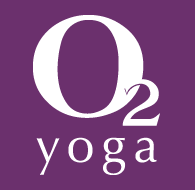
I have lots of friends who are gluten-free. At first, I admit, I found it difficult to understand and then I realized that these people were marginalized just like me. It is as difficult to eat out if you are gluten-free as it is to be vegan just for different reasons but still can be frustrating. I decided to try my best to make foods that were both gluten-free and vegan as those two really do go well together. What I have noticed lately is that I am more aware of how much wheat we as a culture eat. For me, as I am not gluten-free it comes down to what kind of flour to eat if any. Much of what we eat in the US is highly processed white flour which is basically just starch. I make the analogy to eating a big bowl of white glop. Personally, I believe that all foods should be eaten as close to their natural states as possible. Whole grains have three main components, starch, germ, and fiber (hull). White flour is the wheat berry stripped of everything but the starch. The good stuff is in the protein, fat and fiber. That is where the nutrients are and?or the parts that add to the digestibility of of the wheat.
Wheat was originally stripped of these vital nutrients for a couple reasons, to give it longer shelf life, and also to make in more clean and uniform looking, tasting, and performing. Not the best analogy but think supermarket tomato (refined flour), versus home-grown heirloom tomato (the whole grain). Which would you rather eat? Now, I am all for a lovely french baguette but most of the white flour consumed in this country is not in that form. It is in the form of the millions of baked products that we eat all day long. I have always believed that whole-grains are better. I also am starting to notice just how much grains in general I and my family can consume. A vegan household can turn quickly into the house of bagels, pasta, and sandwiches really fast.
When someone asks me, “How do you know you are getting enough nutrients as a vegan?” My response is often, “Well, think about it. If you eat less or no eggs, dairy and meat, and more vegetables and fruits, what do you think will happen to the nutrient content of my diet?” Bratty I know but true yes? That said, I still have to pay attention to what I and my family eat. It is incredibly easy, read lazy, to rely on white flour as the base of our diet. I am now, consciously, making choices that incorporate other kinds of whole grains such as brown rice, millet, and quinoa (which is actually a seed not a grain), and also more veggies and fruits in general. I am not gluten-free. Luckily my body deals with seitan just fine but I still am making an effort to keep my diet and that of my family more diverse, more colorful and less white and brown. I often tell my kids and myself, if you look at your plate and you see lots of colors (natural of course) then you have a healthy meal. If you look at your plate and it is all brown and white you probably don’t.


